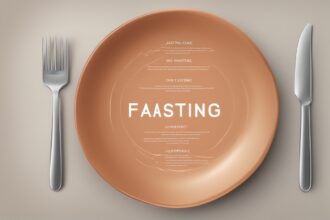Hey there, health enthusiasts! If you’ve been curious about fasting and how it can transform your wellness journey, you’re in the right place. Fasting isn’t just a trend—it’s a practice rooted in history, spirituality, and now, modern science. With so many fasting styles out there, choosing the right one can feel overwhelming. Whether you’re looking to improve your metabolism, shed a few pounds, or simply reset your relationship with food, understanding the different types of fasting is key. In this comprehensive guide, we’ll dive into the most popular fasting methods, explore their benefits with scientific backing, and share practical tips to help you get started. Let’s unpack the world of fasting together!
What Are Fasting Styles and Why Do They Matter?
At its core, fasting is the voluntary abstinence from food and, in some cases, drink for a specific period. But not all fasting approaches are the same. Fasting styles refer to the different methods or patterns of fasting, each with unique rules, durations, and goals. Some focus on weight loss, others on mental clarity or spiritual growth, and many on overall health improvement. Research shows that fasting can support metabolic health, reduce inflammation, and even promote cellular repair through a process called autophagy (Mattson et al., 2017). The beauty of fasting lies in its flexibility—you can choose a style that fits your lifestyle and health objectives. Let’s explore the most common types of fasting to help you decide which might work best for you.
Intermittent Fasting: The Most Popular of Fasting Styles
Intermittent fasting (IF) is arguably the most well-known among fasting styles, and for good reason. It’s not about what you eat but when you eat. IF alternates periods of eating with periods of fasting, and it comes in several forms. The 16/8 method, for instance, involves fasting for 16 hours and eating during an 8-hour window—think skipping breakfast and eating between noon and 8 PM. Other variations include the 5:2 diet, where you eat normally for five days and restrict calories to 500–600 on two non-consecutive days. Studies suggest IF can aid weight loss, improve insulin sensitivity, and lower the risk of chronic diseases (Patterson & Sears, 2017). If you’re new to fasting, IF is a great starting point because it’s sustainable and doesn’t require drastic changes overnight.
Here are a few tips to make intermittent fasting work for you:
- Start with a shorter fasting window, like 12/12, and gradually increase it to 16/8.
- Stay hydrated during fasting hours—water, black coffee, or herbal tea are your friends.
- Focus on nutrient-dense meals during eating windows to avoid energy crashes.
- Listen to your body; if you feel dizzy or overly fatigued, adjust your schedule.
Water Fasting: A Deep Detox Approach
Water fasting takes things up a notch by limiting intake to just water for a set period, often 24–72 hours, though some extend it longer under medical supervision. This is one of the more intense fasting styles, as it completely eliminates calories. Advocates claim it promotes detoxification and gives the digestive system a much-needed break. Scientifically, short-term water fasting has been linked to improved blood pressure and reduced oxidative stress (Horne et al., 2015). However, it’s not for everyone—without proper preparation, it can lead to fatigue, headaches, or electrolyte imbalances. Always consult a healthcare provider before attempting a water fast, especially if you have underlying conditions.
Religious and Spiritual Fasting Practices
Fasting isn’t just about physical health; it’s deeply tied to spiritual and cultural traditions. Many fasting methods originate from religious practices, like Ramadan in Islam, where participants abstain from food and drink from dawn to sunset for a month. Similarly, Christians may fast during Lent, often giving up specific foods or meals. In Hinduism and Buddhism, fasting is often tied to purification and mindfulness. These practices emphasize discipline and spiritual connection over health benefits, though research suggests they can still improve mental well-being and stress resilience (Trepanowski & Bloomer, 2010). If you’re exploring fasting for spiritual reasons, aligning with a tradition that resonates with you can add deeper meaning to the experience.
Juice Fasting and Partial Fasting: Gentle Alternatives
Not ready for a full-on fast? Juice fasting or partial fasting might be your gateway into the world of fasting styles. Juice fasting involves consuming only fruit and vegetable juices for a few days, providing some nutrients while still reducing calorie intake. Partial fasting, on the other hand, allows small amounts of food or specific items, like the Daniel Fast, which focuses on plant-based foods and excludes meat and processed items. While evidence on juice fasting is limited, partial fasting can still offer benefits like reduced calorie intake and improved dietary habits (Johnstone, 2015). These methods are less restrictive, making them ideal for beginners or those wary of extreme fasting.
Consider these tips when trying juice or partial fasting:
- Choose fresh, homemade juices to avoid added sugars found in store-bought options.
- Plan your meals or juices ahead to ensure you’re getting a variety of nutrients.
- Keep portions small during partial fasts to maintain the spirit of restriction.
- Transition slowly back to regular eating to avoid digestive discomfort.
- Monitor how your body responds and stop if you feel unwell.
Extended Fasting: Pushing the Limits
For the more experienced, extended fasting—lasting beyond 72 hours—represents one of the most challenging fasting approaches. This style is often used for therapeutic purposes, such as in clinical settings to manage conditions like obesity or type 2 diabetes under strict medical supervision. Extended fasting can trigger deeper states of ketosis, where the body burns fat for fuel, and may enhance autophagy, the body’s cellular cleanup process (Anton et al., 2018). However, risks like nutrient deficiencies and muscle loss are real if not done correctly. This isn’t a casual weekend experiment—extended fasting requires preparation, professional guidance, and a clear exit strategy to reintroduce food safely.
How to Choose the Right Fasting Style for You
With so many fasting styles and fasting methods to consider, how do you pick the right one? Start by assessing your goals—are you fasting for weight loss, spiritual growth, or a health reset? Consider your lifestyle too; a busy schedule might pair better with intermittent fasting than a multi-day water fast. Your health status matters as well—those with medical conditions or who are pregnant should avoid intense fasting without a doctor’s approval. Experimentation is key. Try a gentler approach first, track how you feel, and adjust as needed. Fasting isn’t a one-size-fits-all solution, so finding your sweet spot might take some trial and error.
As we’ve explored, the world of fasting is vast and varied, offering something for everyone, from beginners to seasoned fasters. Whether you’re drawn to the flexibility of intermittent fasting, the intensity of water fasting, or the spiritual depth of religious fasts, these fasting styles can be powerful tools for health and self-discovery. Remember, fasting is a personal journey—there’s no need to rush or compare yourself to others. Start small, stay informed, and prioritize safety. Have you tried any of these fasting methods? I’d love to hear about your experiences or answer any questions in the comments below. Let’s keep the conversation going and support each other in mastering the art of fasting!
References
- Anton, S. D., Moehl, K., Donahoo, W. T., Marosi, K., Lee, S. A., Mainous, A. G., … & Mattson, M. P. (2018). Flipping the metabolic switch: Understanding and applying the health benefits of fasting. Obesity, 26(2), 254-268.
- Horne, B. D., Muhlestein, J. B., & Anderson, J. L. (2015). Health effects of intermittent fasting: Hormesis or harm? A systematic review. The American Journal of Clinical Nutrition, 102(2), 464-470.
- Johnstone, A. (2015). Fasting for weight loss: An effective strategy or latest dieting trend? International Journal of Obesity, 39(5), 727-733.
- Mattson, M. P., Longo, V. D., & Harvie, M. (2017). Impact of intermittent fasting on health and disease processes. Ageing Research Reviews, 39, 46-58.
- Patterson, R. E., & Sears, D. D. (2017). Metabolic effects of intermittent fasting. Annual Review of Nutrition, 37, 371-393.
- Trepanowski, J. F., & Bloomer, R. J. (2010). The impact of religious fasting on human health. Nutrition Journal, 9, 57.






